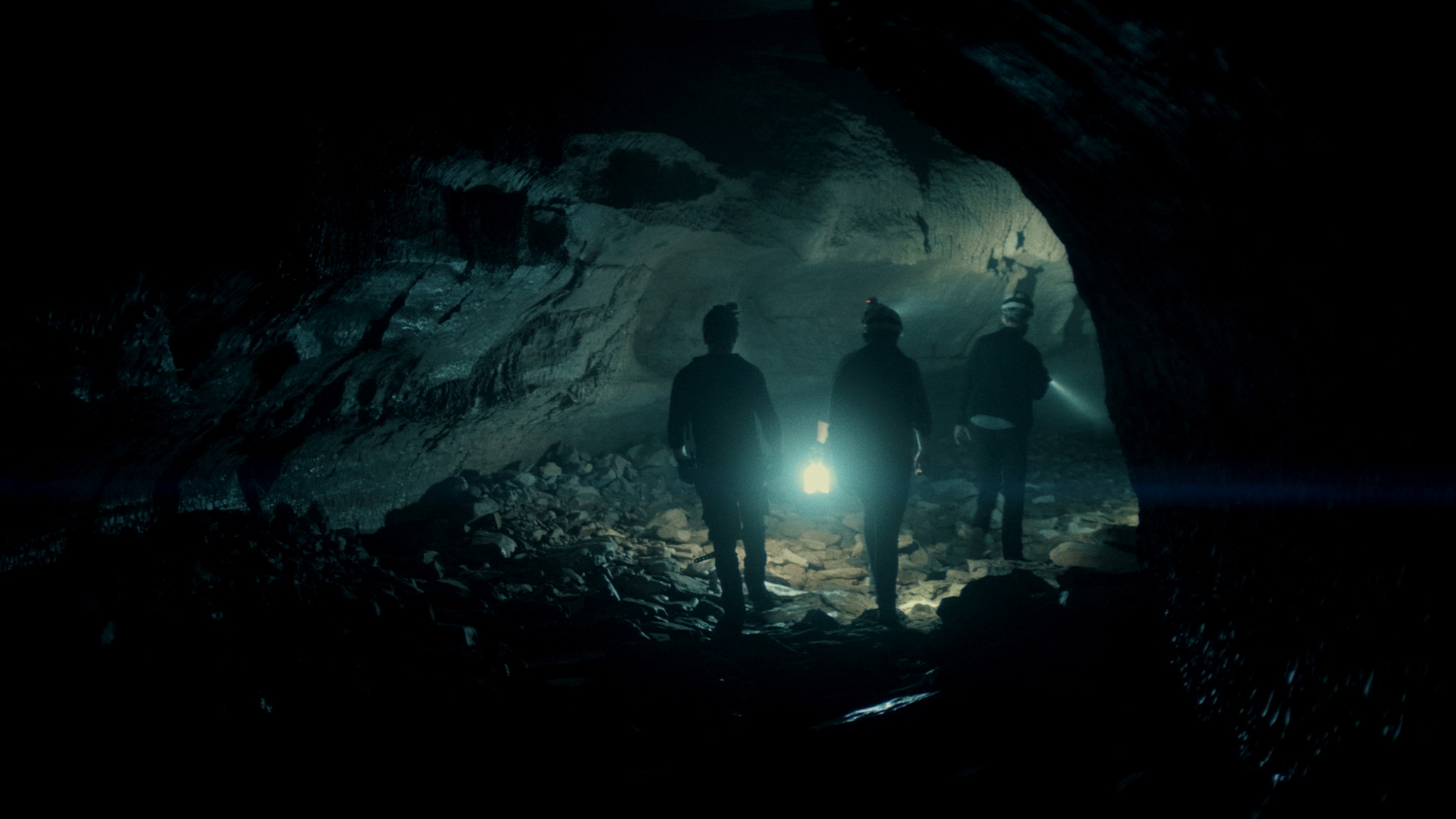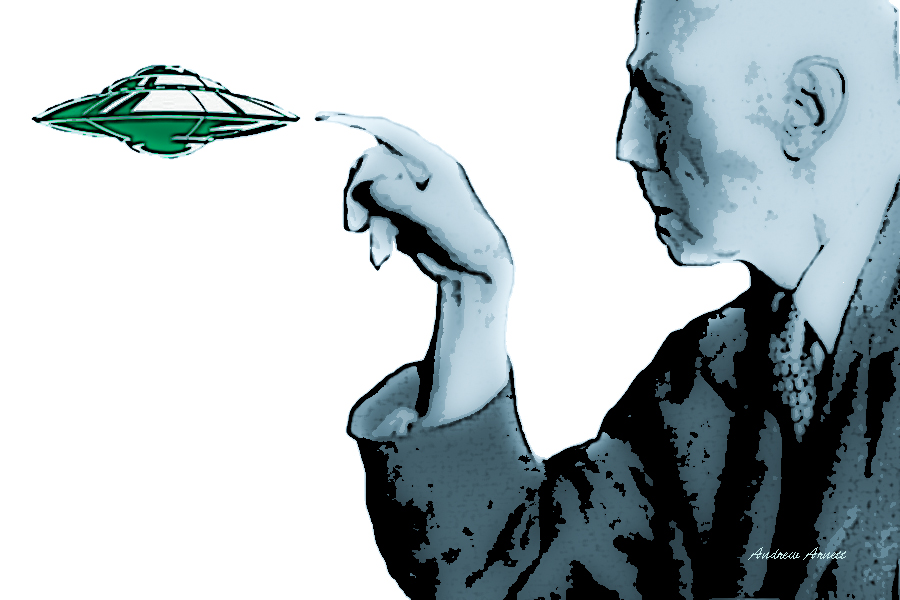
Aleister Crowley And The Montauk Project: A 100-Year Old Connection
- March 25, 2018
- 0
by Andrew Arnett
(https://andrewarnett.me)
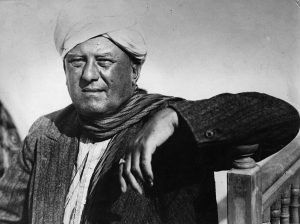 In a previous article, I discussed how Aleister Crowley had, in 1918, performed a magical ceremony called the Amalantrah Working for the purpose of communion with disincarnate entities. During that ritual, Crowley secured a portrait of a being which bore a remarkable likeness to entities commonly referred to as “grey aliens.” Some researchers have sighted this drawing as evidence that Crowley had successfully opened an interdimensional portal which resulted in the present day wave of UFO sightings.
In a previous article, I discussed how Aleister Crowley had, in 1918, performed a magical ceremony called the Amalantrah Working for the purpose of communion with disincarnate entities. During that ritual, Crowley secured a portrait of a being which bore a remarkable likeness to entities commonly referred to as “grey aliens.” Some researchers have sighted this drawing as evidence that Crowley had successfully opened an interdimensional portal which resulted in the present day wave of UFO sightings.
But Crowley wasn’t done yet, and New York, for him, turned out to be a synchronistic hot spot during that auspicious year of 1918. Researchers have subsequently linked him to various other UFO related phenomenon that would define the century to come, in the “Aeon of Horus.” Many of our major UFO related conspiracies — from alien abduction to the Montauk Project, have revealed themselves to be, albeit illegitimate, offsprings of Aleister Crowley’s fecund influence from 100 years ago.
Aleister Crowley And The Montauk Project
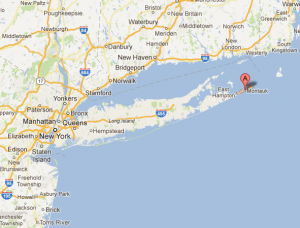 In the summer of 1918, Crowley, whilst living in New York City, went to Montauk, Long Island, on a “magical retreat,” the details of which remain a mystery still, though some researchers believe it is somehow linked to the weird goings-on that would be ascribed to the secret U.S. government program conducted at Camp Hero, known as the Montauk Project.
In the summer of 1918, Crowley, whilst living in New York City, went to Montauk, Long Island, on a “magical retreat,” the details of which remain a mystery still, though some researchers believe it is somehow linked to the weird goings-on that would be ascribed to the secret U.S. government program conducted at Camp Hero, known as the Montauk Project.
Peter Moon writes in Montauk Revisited: Adventures In Synchronicity, that Crowley may have been “creating wormholes from the physical realm to other realities and back again,” and how the “bizarre manipulations at Montauk and in Philadelphia could have been elaborate physical deployments at the behest of simply one very powerful (Crowley) magician.”
The origins of the Montauk Project are murky indeed and date back to 1943, aboard the USS Eldridge, where research into radar invisibility was being conducted in what would be referred to as the Philadelphia Experiment, resulting in Stealth, as well as other technologies. Though successful, the experiment allegedly caused a drastic side effect — transporting sailors into another dimension then back again, only to leave them in a state of complete mental confusion or worse, implanted inside the bulkhead of the ship itself.
After the war ended, the director of the program, one Dr. John von Neumann, was given a new directive — to study the human mind and its inability to withstand interdimensional travel without going insane. Towards this end, Neumann conducted experiments which linked people’s minds to computers, eventually succeeding in capturing human thought through esoteric crystal radio receivers, then storing them in computer information bits.
This capability was apparently enhanced to the point where thought patterns could be displayed on a computer screen and printed on paper. From this technology, sinister methods for mind control were considered, and a report was presented to Congress for funding, who in turn shut the project down for fear of being mind controlled themselves.
Subsequently, the project was secretly revived by the military as a black ops program, and a facility was chosen in the late 1960s at Camp Hero in Montauk, which housed a Sage radar antenna that emitted a frequency of 400–425 Megahertz, consequently the same band used for accessing the human mind, and controlling it. Ultimately, however, the program got out of control when the project’s top psychic: Duncan Cameron, whilst sitting in the Montauk chair, powered with thought-enhancing crystals amplified by radar, unleashed a monster from his subconscious which destroyed the facility and ended the project all together.
Writers Preston Nichols and Peter Moon believe that the most spectacular discovery they made was that the Montauk Project was inextricably linked to the most infamous occultist of all time: Aleister Crowley, often referred to as “the wickedest man in the world.”
In Pyramids of Montauk, Nichols and Moon write:
“According to reports, Crowley himself had used the practice of sexual magic in order to manipulate time itself, communicate with disembodied entities and to travel interdimensionally. It was even suggested that the interdimensional nature of the Philadelphia Experiment could have been the outward expression of Crowley’s magical operations.”
(Pyramids of Montauk, pp. 7)
In their research, they found that, in addition to Crowley visiting Montauk in 1918, there were numerous connections between Duncan Cameron’s family and Crowley. The name “Duncan Cameron” even appears in Crowley’s autobiography. “Cameron” was the name of Jack Parson’s wife and “scarlet woman” who assisted Crowley devotee Jack Parsons in the 1947 Babylon Working, which allegedly opened an interdimensional portal.
Some other synchronicities include the fact that historical records show the Native American Montauk tribe sold the Montauk land to the townspeople of East Hampton on August 6, 1660 (note the three 6s). The Indians subsequently received a counter-bond deed on February 6, 1661 (again with the 6s) to secure their rights to occupy said land. The writers point out that Crowley fancied himself to be the “Beast 666,” the Anti-Christ of the Book of Revelations.
These are just some of the coincidences discussed by Nichols and Moon in their series of Montauk related books. Some general theories as to why the area attracts such weirdness include the possibility of a portal or Stargate in the vicinity, or perhaps there is an influence coming from the nearby Montauk sacred burial grounds. Perhaps though, these are merely tenuous correlations conflated for the purpose of telling a really great story. Note that, the Montauk mythology was the basis for the Netflix series Stranger Things.
At the very least, we find it extraordinary that Crowley has managed to worm his way into the script of a truly endearing modern mythos. And it turns out that Crowley has done the same for yet another Fortean drama of these modern times- the alien abduction.
Betty And Barney Hill And Crowley
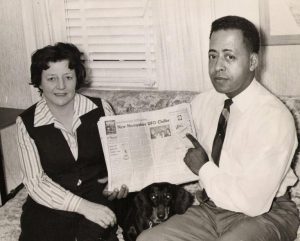 On the evening of September 19, 1961, Betty and Barney Hill were driving south on Route 3 through the White Mountains of New Hampshire in their 1957 Chevrolet Bel Air when Betty spotted a bright object in the sky, which she initially took to be a falling star, though it was falling upward. Noticing that the object was moving erratically, Betty and Barney pulled the car over to take a closer look, as well as to walk their dog Delsey.
On the evening of September 19, 1961, Betty and Barney Hill were driving south on Route 3 through the White Mountains of New Hampshire in their 1957 Chevrolet Bel Air when Betty spotted a bright object in the sky, which she initially took to be a falling star, though it was falling upward. Noticing that the object was moving erratically, Betty and Barney pulled the car over to take a closer look, as well as to walk their dog Delsey.
The Hills continued to drive and at about one mile south of Indian Head, the flying object descended rapidly toward their vehicle, causing the Hills to stop their car in the middle of the road. The object, shaped like a flying cigar and 80–100 feet long, filled the entire field of view in their windshield. Barney jumped out of the car and, using his binoculars, claimed to have seen 8–11 humanoid figures, described as “somehow not human.”
Barney returned to the vehicle and, fearing capture, quickly drove away. Betty and Barney then experienced amnesia or memory loss, and the next thing they knew was that they were 35 miles farther along on their journey, with two hours missing and unaccounted for.
Three years later, the Hills underwent regression hypnosis in an attempt to retrieve their lost memory. After subsequent sessions, the Hills were able to recall an experience of abduction by aliens, who claimed to be from the Zeta Reticuli system. After a physical examination by the aliens, the Hills had their memories erased then, returned to their car. Thus began the era of the alien abduction scenario.
But how does Aleister Crowley fit into this scenario? Well, as you may recall, Crowley was living in New York in 1918 but, before he moved there, Crowley lived in, you guessed it — New Hampshire, near a town called Bristol, located less than an hour away from where the Hills experienced their alien abduction.
It was the year 1916 (the inverse of 1961) and, while in New Hampshire, Crowley, according to Richard Cavendish in History of Magic, promoted himself to the rank of Magus through a ceremony which involved baptizing a toad as Jesus of Nazareth, then crucifying it.
In New Hampshire, Crowley had his own paranormal visitations, with a type of glowing orb. The experience affected Crowley enough for him to write and submit a letter for publication in The New York Times. The letter reads:
To the Editor of The New York Times:
I do not know whether globular lightning is a sufficiently
rare phenomenon in this country to merit remark. Yesterday a
globe of fire with an apparent diameter of about a foot burst on
the floor of the middle room of a cottage here and within a few
inches of my right foot. Curiously enough, no damage of any
kind was done.ALEISTER CROWLEY.
New Bristol, N.H.,
July 13, 1916
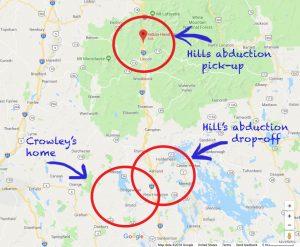 Writer/researcher Christopher Knowles notes, on his website, that the highway which links Crowley’s home in New Hampshire to the Hill’s abduction spot is Interstate 93. Knowles points out that the number 93 is “the holiest of holies in Thelemite gematria.” The number itself is derived, numerologically, from combining two central words in the philosophy of Thelema — which are Thelema (Will) and Agape (Love), taken from the phrases “Do what thou wilt shall be the whole of the Law” and “Love is the law, love under will.”
Writer/researcher Christopher Knowles notes, on his website, that the highway which links Crowley’s home in New Hampshire to the Hill’s abduction spot is Interstate 93. Knowles points out that the number 93 is “the holiest of holies in Thelemite gematria.” The number itself is derived, numerologically, from combining two central words in the philosophy of Thelema — which are Thelema (Will) and Agape (Love), taken from the phrases “Do what thou wilt shall be the whole of the Law” and “Love is the law, love under will.”
Furthermore, Knowles states that the aliens which abducted the Hills deposited them in the town which Crowley was living in, at the time. Knowles states that, “35 miles down the road would have ensured that the Hills would have woken up in the very same town in which Crowley was actually living in 1916 (Hebron/Bristol) . . . Let me repeat that: the Hills woke up from their missing time episode in the very same town that Aleister Crowley had lived just months before his own contact experience (in the Amalantrah Working).”
The Amalantrah Working, according to occultists, opened up an interdimensional portal which put the magician in contact with a being he refers to as Lam. As we have mentioned, the Hills themselves came into contact with beings during their abduction and, during their regression therapy, created a composite drawing of those beings. Now, if we compare this portrait with the portrait of Crowley’s Lam, we note a remarkable similarity.
Quest for the Holy Grail
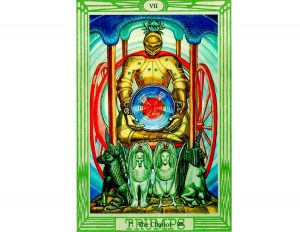 At this point in the narrative, we might start thinking of Crowley as the paranormal equivalent to a photo bomber — his face keeps popping up at all the pivotal junctures in Fortean history. Does this give truth to the claim that Crowley is the prophet of the New Aeon of Horus, or are these connections ascribed to him by overzealous fanboys? Do we even know if the Great Beast himself gave any credence to the field of Ufology?
At this point in the narrative, we might start thinking of Crowley as the paranormal equivalent to a photo bomber — his face keeps popping up at all the pivotal junctures in Fortean history. Does this give truth to the claim that Crowley is the prophet of the New Aeon of Horus, or are these connections ascribed to him by overzealous fanboys? Do we even know if the Great Beast himself gave any credence to the field of Ufology?
This may be hard to establish for, tellingly, Crowley passed away at the very dawn of the UFO flap, in the year 1947, the same year which ushered in the modern wave of UFO sightings. The terminology, like “flying saucer” and “UFO,” didn’t even exist during his time. To discern his thinking, we need to look for clues, of which he left a few.
Let us turn our attention to The Book of Thoth by Aleister Crowley, a divinatory tarot deck painted by Lady Frieda Harris according to guidelines and instructions set by Crowley himself. Take a look at the seventh Trump card — the Chariot, for there is something curious about this card.
The card depicts a Charioteer clothed in armor, sitting cross-legged inside a chariot drawn by four Kerubs, the Bull, the Lion, the Eagle and the Man. There is a blue canopy on the Chariot which, according to Crowley, represents Binah, the feminine principle, and scarlet wheels, representing Geburah, the principal of energy. Everything is, in fact, quite standard to the symbolism found in a traditional version of this card, except for one anomaly — the Charioteer is holding in his hands what appears to be a rotating flying saucer.
What can we discern about this saucer-like image? In The Book of Thoth, Crowley gives a brief interpretation of this symbol, saying:
“The central and most important feature of the card is its centre — the Holy Grail. It is of pure amethyst, of the colour of Jupiter, but its shape suggests the full moon and the Great Sea of Binah.
In the centre is radiant blood; the spiritual life is inferred; light in the darkness. These rays, moreover, revolve, emphasizing the Jupiterian element.”
(The Book of Thoth, p. 86–87)
Crowley doesn’t speak much on the subject and yet, what he does say is revealing. He acknowledges that this symbol is the most important feature on the card, but he refers to it as the “Holy Grail.” There is a bit of a discrepancy here, as the Holy Grail is, traditionally, a vessel which serves as a motif in the Arthurian literature, and is often depicted as a cup, sometimes as a dish. It has also been (rarely) depicted as a stone, though this would be the first time it is shown as a spinning flying saucer, if that is what we are seeing.
Crowley says his version of the card is “much influenced by the Trump portrayed by Eliphas Levi,” and indeed, many of the same motifs are present in both cards, sans the saucer. If Crowley’s “Holy Grail” is not literally a cup, then he must be using the term metaphorically, to denote a goal of great significance, as in the Arthurian “Quest,” which set the Knights of the Round Table on a mission, searching for their elusive Grail.
Can this “Quest” then, be the search for extraterrestrial life? Consider Crowley’s description again, in a different light. The wording could just as easily be used to describe a UFO, like “light in the darkness,” “rays, moreover revolve,” and “Jupiterean element.” If Crowley is dropping hints here that he is, in fact, talking about a UFO, then the seventh Trump is the perfect place to drop it, for the term “chariot” is often used by ancients to denote the modes of transport used by flying “gods,” or aliens, as discussed in greater detail by Erich von Daniken in the book Chariots of the Gods.
In this light, Fox Mulder of the television series The X-Files could be viewed as a modern iteration of the medieval archetype of a Knight of the Round Table, searching for truth in the holy saucer. As they say, the truth is out there.
References
Cavendish, Richard, The History of Magic, Penguin Books, 1991.
Crowley, Aleister, The Book of Thoth (Egyptian Tarot), Samuel Weiser, 1944.
Daniken, Erich von, Chariots of the Gods, Berkley, 1999.
Nichols, Preston B., & Moon, Peter, Montauk Revisited: Adventures in Synchronicity, Sky Books, 2011.
Nichols, Preston B., & Moon, Peter, Pyramids of Montauk: Explorations in Consciousness, Sky Books, 1995.

